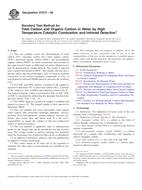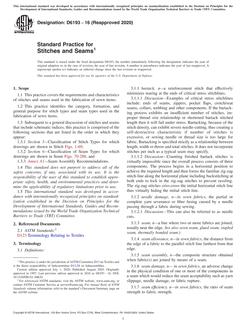1.1 This test method may be used to determine the initial, fractional, filtration efficiency of household and commercial canister (tank-type), stick, hand-held, upright, and utility vacuum cleaner systems.
1.1.1 Water-filtration vacuum cleaners which do not utilitze a replaceable dry media filter located between the water-based filter and cleaning air exhaust are not included in this test method. It has been determined that the exhaust of these vacuum cleaners is not compatible with the specified discrete particle counter (DPC) procedure.
1.2 The initial, fractional, filtration efficiencies of the entire vacuum cleaner system, at four discrete particle sizes (0.3, 0.5, 1.0 and 2.5 µm), is derived by counting upstream challenge particles and the constituent of downstream particles while the vacuum cleaner system is being operated in a stationary test condition.
1.3 The vacuum cleaner system is tested at the nozzle under a normal airflow rate equivalent to 150% of the airflow rate produced at the maximum air power point as determined in accordance with Test Method F 558.
1.4 The vacuum cleaner system is tested with a new filter(s) installed, and with no preliminary dust loading. The fractional efficiencies determined by this test method shall be considered initial system filtration efficiencies.
1.5 Neutralized potassium chloride (KCl) is used as the challenge media in this test method.
1.6 One or two particle counters may be used to satisfy the requirements of this test method. Both require flow control means to switch between sampling the upstream and downstream air sampling probes.
1.7 To efficiently utilize this test method, automated test equipment and computer automation is recommended.
1.8 Different sampling parameters, flow rates, and so forth, for the specific applications of the equipment and test procedure may provide equivalent results. It is beyond the scope of this test method to define those various possibilities.
1.9 This test method is limited to the test apparatus, or its equivalent, as described in this document.
1.10 This test method is not intended or designed to provide any measure of the health effects or medical aspects of vacuum cleaning.
1.11 This test method is not intended or designed to determine the integrity of HEPA filtration assemblies used in vacuum cleaner systems employed in nuclear and defense facilities.
1.12 The inch-pound system of units is used in this test method, except for the common usage of the micrometer, µm, for the description of particle size which is a SI unit.
1.13 This standard does not purport to address all of the safety concerns, if any, associated with its use. It is the responsibility of the user of this standard to establish appropriate safety and health practices and determine the applicability of regulatory limitations prior to use.
Product Details
- Published:
- 03/01/2004
- Number of Pages:
- 17
- File Size:
- 1 file , 180 KB
- Redline File Size:
- 2 files , 330 KB


